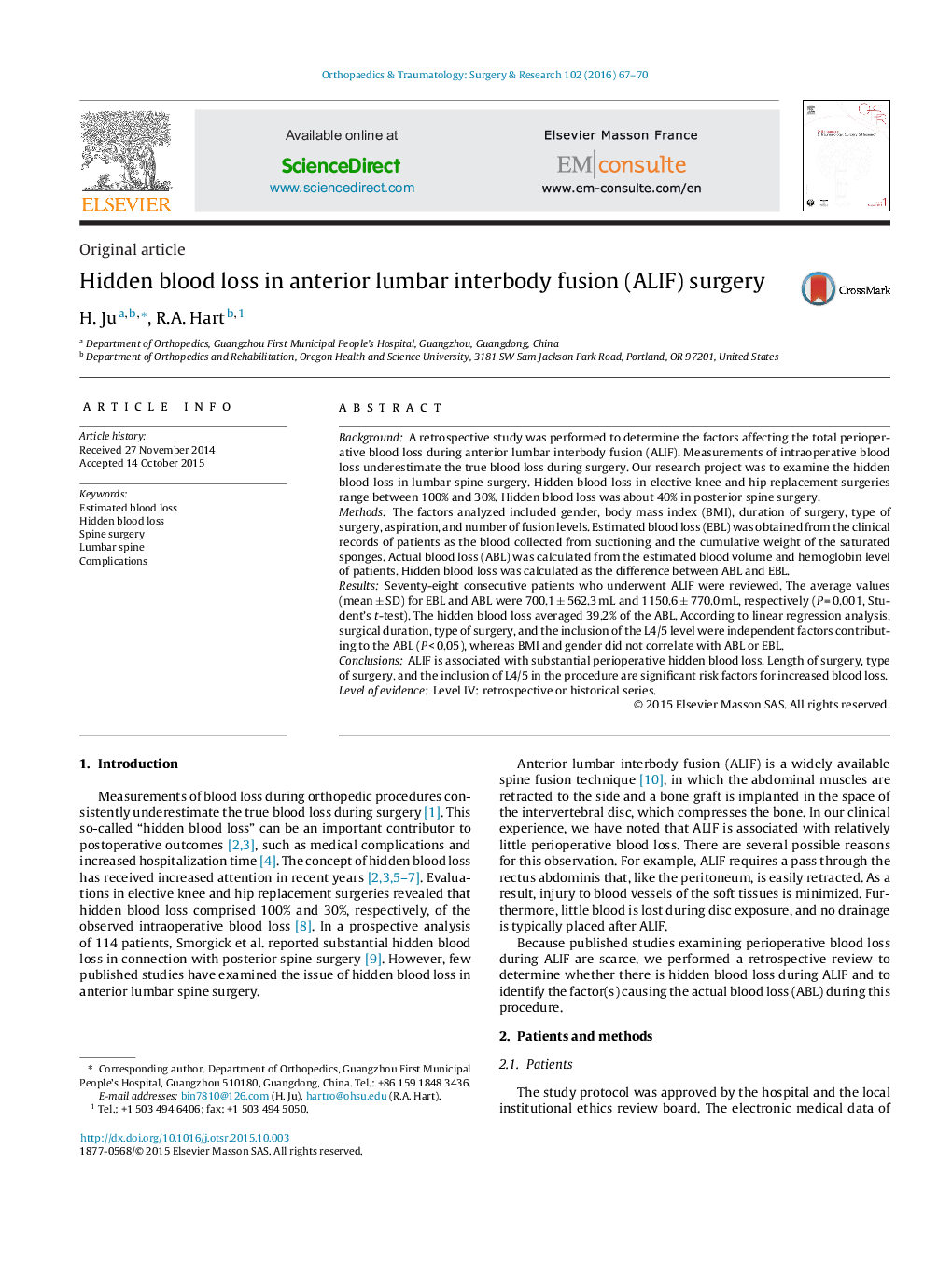| کد مقاله | کد نشریه | سال انتشار | مقاله انگلیسی | نسخه تمام متن |
|---|---|---|---|---|
| 4080946 | 1267573 | 2016 | 4 صفحه PDF | دانلود رایگان |
BackgroundA retrospective study was performed to determine the factors affecting the total perioperative blood loss during anterior lumbar interbody fusion (ALIF). Measurements of intraoperative blood loss underestimate the true blood loss during surgery. Our research project was to examine the hidden blood loss in lumbar spine surgery. Hidden blood loss in elective knee and hip replacement surgeries range between 100% and 30%. Hidden blood loss was about 40% in posterior spine surgery.MethodsThe factors analyzed included gender, body mass index (BMI), duration of surgery, type of surgery, aspiration, and number of fusion levels. Estimated blood loss (EBL) was obtained from the clinical records of patients as the blood collected from suctioning and the cumulative weight of the saturated sponges. Actual blood loss (ABL) was calculated from the estimated blood volume and hemoglobin level of patients. Hidden blood loss was calculated as the difference between ABL and EBL.ResultsSeventy-eight consecutive patients who underwent ALIF were reviewed. The average values (mean ± SD) for EBL and ABL were 700.1 ± 562.3 mL and 1150.6 ± 770.0 mL, respectively (P = 0.001, Student's t-test). The hidden blood loss averaged 39.2% of the ABL. According to linear regression analysis, surgical duration, type of surgery, and the inclusion of the L4/5 level were independent factors contributing to the ABL (P < 0.05), whereas BMI and gender did not correlate with ABL or EBL.ConclusionsALIF is associated with substantial perioperative hidden blood loss. Length of surgery, type of surgery, and the inclusion of L4/5 in the procedure are significant risk factors for increased blood loss.Level of evidenceLevel IV: retrospective or historical series.
Journal: Orthopaedics & Traumatology: Surgery & Research - Volume 102, Issue 1, February 2016, Pages 67–70
